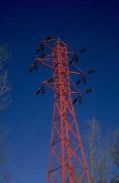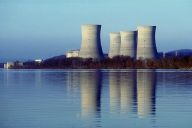 The infrastructure we rely upon to generate and transmit electricity represents one of the largest capital investments made by society. Energy is the driving force behind almost everything we do. The generation of electricity also has serious environmental impacts. Many forms of generation increase the concentration of greenhouse gasses, create health hazards, create dangerous wastes, or damage water quality. Energy Infrastructure falls into two general categories, energy production and energy transmission.
The infrastructure we rely upon to generate and transmit electricity represents one of the largest capital investments made by society. Energy is the driving force behind almost everything we do. The generation of electricity also has serious environmental impacts. Many forms of generation increase the concentration of greenhouse gasses, create health hazards, create dangerous wastes, or damage water quality. Energy Infrastructure falls into two general categories, energy production and energy transmission.
The decentralization of electricity production and thus the large-scale use of electrical energy became possible due to the development of alternating Current by Nikola Tesla. Alternating current is produced by turning a turbine, a process that now relies on the burning of petroleum, natural gas, goal, or one of these Other Energy Sources.
Though large-scale generation projects dominate the energy landscape, there is a growing movement towards distributed generation. Such projects limit the probability of widespread blackouts, reduce pollution, and diversify the energy production industry, breaking reliance on single fuel sources. All methods of energy generation produce large amounts of waste heat; capturing this heat for practical use is known as co-generation. The excess heat is used to heat buildings and drive industrial processes.
Energy transmission is the delivery of electrical energy from generation plants to consumers, usually through a large network of wires. As power loss falls as the voltage of the electrical energy rises, transformers are used to increase voltage as much as possible for transport over long distances. The voltage is then reduced (to 110V in Canada) at a substation near local homes for household use. Transmission usually is conducted by overhead lines, as underground lines lose more energy due to resistive losses. This network of lines is often referred to as the “grid”. Electrical grids are expensive, but allow energy from many sources to be provided on demand at many locations.

Go to the Resources page.
Go to the Case Studies for energy.
